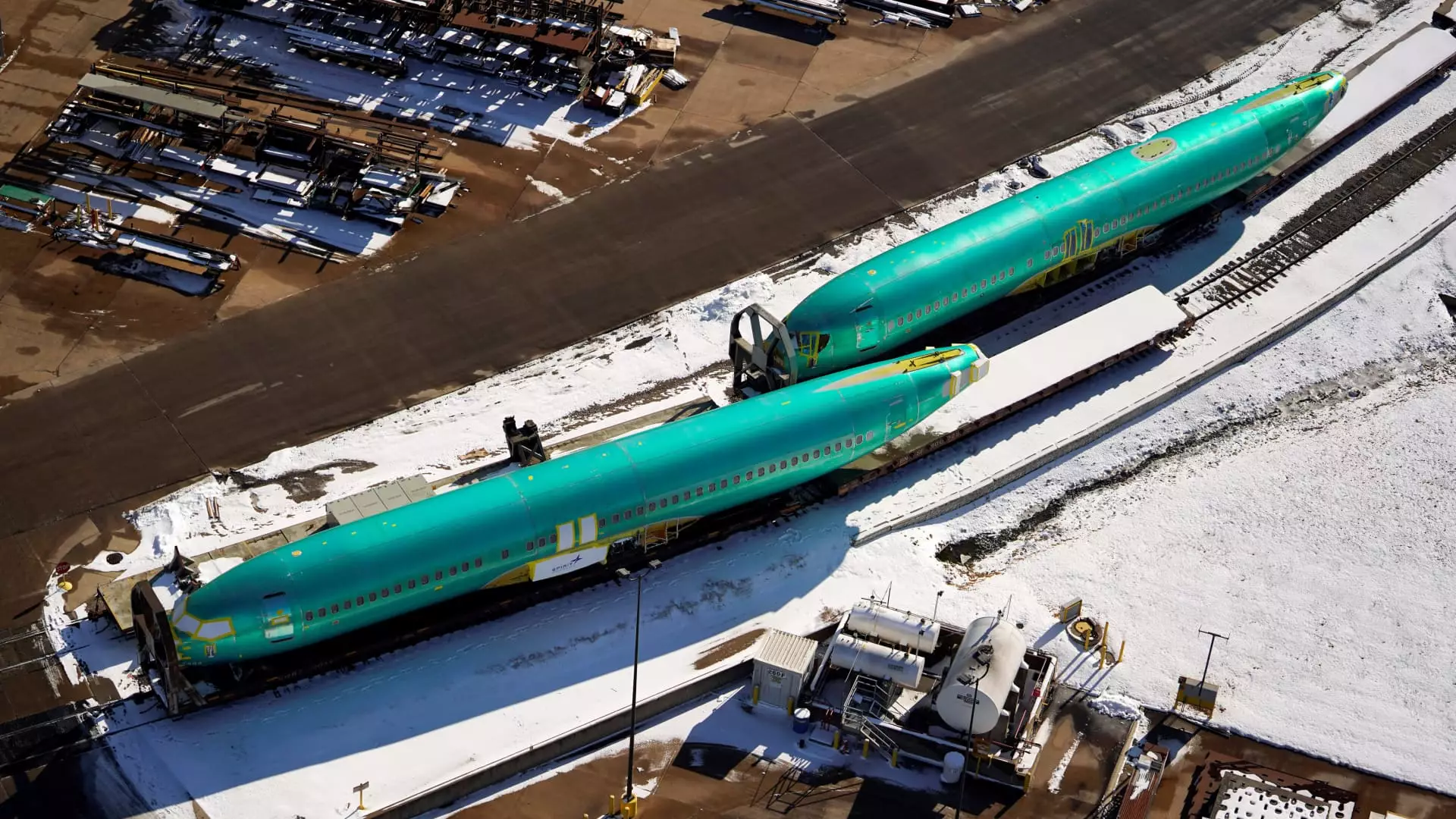The aerospace sector finds itself grappling with significant disruptions, notably through the ongoing strike organized by machinists at Boeing. This labor action has extended into its sixth week, compelling Boeing supplier Spirit AeroSystems to furlough approximately 700 workers. The ripple effects of the strike, which commenced on September 13, have been profound, with more than 32,000 Boeing employees participating in the walkout after rejecting a tentative labor agreement. This upheaval not only intensifies Boeing’s financial pressures but also challenges the leadership of its recently appointed CEO, Kelly Ortberg.
Spirit AeroSystems’ decision to implement furloughs represents about 5% of its U.S. workforce, highlighting the serious ramifications of labor disputes in interconnected supply chains. The furloughed employees, primarily stationed at Spirit’s major facilities in Wichita, Kansas, are specifically linked to the production of Boeing’s 777 and 767 aircraft. The ongoing strike, which has left operations stalled, prompts Spirit to consider further workforce reductions if the situation continues to drag beyond November. Spirit’s spokesperson, Joe Buccino, has indicated that if the labor impasse remains unresolved, additional layoffs may become necessary, thereby increasing the strain on both employees and the organization.
For Boeing, the stakes are similarly high. In the face of substantial operational setbacks, Ortberg has introduced a range of drastic measures intended to mitigate soaring losses, including a significant reduction in the workforce by approximately 10%. Such cuts involve shedding around 17,000 jobs, which reflects the severe economic environment the company is navigating. Furthermore, Boeing is halting the production of the 767 commercial aircraft once current orders are fulfilled in 2027, while the highly anticipated 777X wide-body jet is facing further delays, with its debut now pushed back to 2026.
In a bid to bolster liquidity amidst these challenges, Boeing is actively seeking options to raise both debt and equity. The situation is compounded by the larger strategic move to acquire Spirit AeroSystems, a process that is not expected to conclude until mid-2025. This acquisition, which underscores Boeing’s reliance on Spirit’s capabilities, sheds light on the interdependencies that characterize the aerospace industry. The plight of Spirit and Boeing serves as a cautionary tale of how labor disputes can precipitate a downward spiral in production and financial stability.
The ongoing strike and subsequent furloughs at Spirit AeroSystems underscore the fragility of the aerospace sector amid labor unrest and economic pressure. The intertwined futures of these companies highlight the challenges leaders face in balancing workforce needs with financial survival. As they navigate this crisis, the eyes of the industry remain fixed on the outcomes of negotiations and the long-term strategic adjustments that must occur in response to shifting market conditions.


Leave a Reply